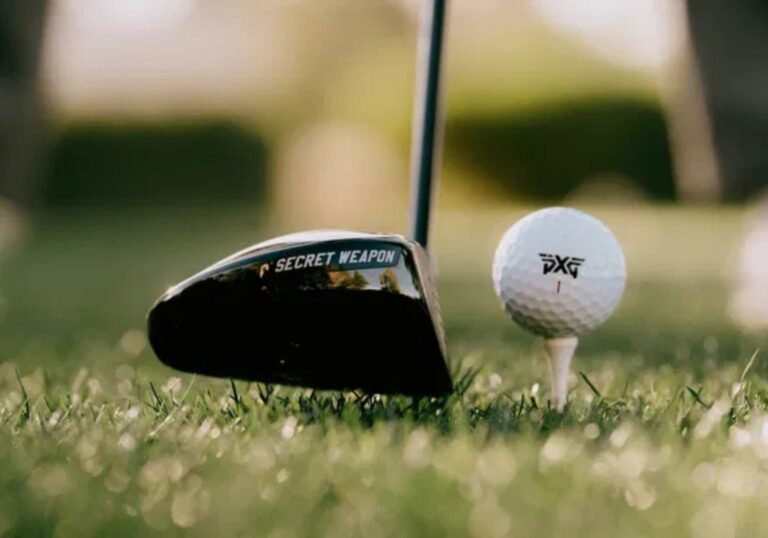If you’ve ever looked at your driver and wondered, “Is this the right length for me?” you’re not alone. Shaft length is one of the most overlooked aspects of driver fitting, but it plays a big role in both distance and accuracy. Play a shaft that’s too long and you may lose control. Too short? You might sacrifice some distance.
So how do you find the right balance? Let’s break it down.
Why driver shaft length matters
The shaft is your core connection to the clubhead. Its length affects swing speed, strike consistency, launch angle, shot dispersion and overall distance and control.
A longer shaft can help you swing faster, but it also makes it harder to consistently find the center of the face. That’s why the “longer is better” myth often doesn’t hold up for most amateurs.
Standard driver shaft lengths (and why they vary)
Most stock drivers off the rack come with shafts between 45.5 and 46 inches, depending on the brand. For example, TaylorMade, Callaway, and COBRA often default to 45.75 inches, while Titleist and Ping usually stick closer to 45.5 inches. On Tour, drivers are almost always shorter, typically between 44.5 and 45.25 inches.
So why do most off-the-rack drivers come longer? Because in theory, a longer shaft produces more clubhead speed and distance. And in a hitting bay or launch monitor session, that often shows up as a win. But in real-world play, many golfers find that control and consistency are far more important than a few extra yards.
The myth of longer equals longer
A longer shaft can add distance, but only if you can still make solid contact. In most cases, when amateur golfers move from a 45.5-inch shaft to a 44.5-inch one, they hit the center of the face more often and gain distance through improved launch and lower spin. Even PGA Tour players rarely use shafts over 45.25 inches, with many opting for 44.5 or even 44 inches to keep their driver more controllable.
So what’s the best shaft length for you?
There’s no universal answer, but here are some guidelines based on how you swing.
If you struggle with wild drives, inconsistent contact, a low smash factor, or feeling out of control with the driver, try a shorter shaft. Something between 44 and 45 inches could help you find more fairways and better contact.
If you consistently center the face, have a neutral swing path, and are trying to get every yard you can, you might benefit from a slightly longer shaft. But even then, 45.5 inches is often the upper limit for most players before accuracy starts to drop.

How to test the right length
Get fit professionally
A proper fitting session with a launch monitor can show you how different lengths affect your clubhead speed, smash factor, launch angle, spin rate, and dispersion. You’ll get a clearer picture of whether longer or shorter is helping your game.
Try it yourself
If a fitting isn’t an option, test things on your own. Try choking down on your current driver by one inch and see what happens to your control and contact. Some club fitters may also offer demo shafts of different lengths to try out. Pay attention not just to distance but also to shot pattern.
Check your posture and balance
Shaft length changes your setup. If your driver feels too long, you might be standing taller or coming out of your posture. If it’s too short, you may bend too much or start swinging flatter than usual. Watch your body as much as your ball flight.
Is there a correlation between swing speed and driver length?
Not as much as you might think. While longer shafts give you a wider arc and potentially more speed, that’s only helpful if you can still hit it on the center. Otherwise, it just leads to poor strikes.
Here’s a comparison. Golfer A swings at 104 mph with a 46-inch driver but misses the center often. Golfer B swings at 100 mph with a 44.5-inch driver and hits the sweet spot nearly every time. Golfer B will usually hit it farther and straighter, because their ball speed and launch are more consistent.
What length do the pros use?
Here are a few examples:
Rory McIlroy: 44.5 inches
Justin Thomas: 44.5 inches
Rickie Fowler: 43.5 inches
Even Bryson DeChambeau, who experimented with a 48-inch shaft (now illegal for tournament play) for maximum speed, went back to something closer to 45 inches for more control. The point is, Tour players don’t guess. They test and optimize based on what helps them score.
Final thoughts: control first, speed second
The right shaft length comes down to one simple question. Can you hit the center of the face consistently while swinging comfortably? If yes, then your driver is likely the right length. If not, don’t be afraid to test a shorter build. You might unlock better launch conditions, tighter dispersion, and even more distance.
Longer isn’t always better. The right length is the one that helps you play your best golf.
Let’s hear from you
Have you ever experimented with different driver shaft lengths? Did you notice a difference in your distance, accuracy, or confidence off the tee? Share your experience in the comments—someone out there could benefit from your insight.
